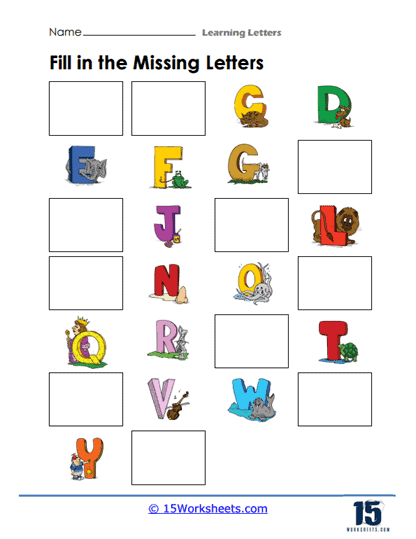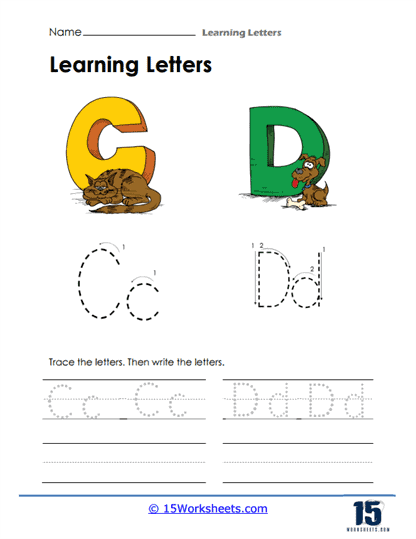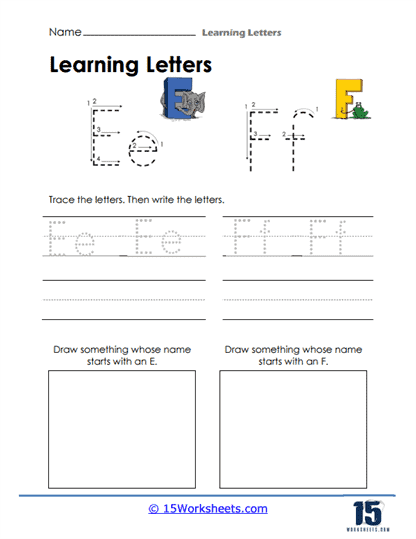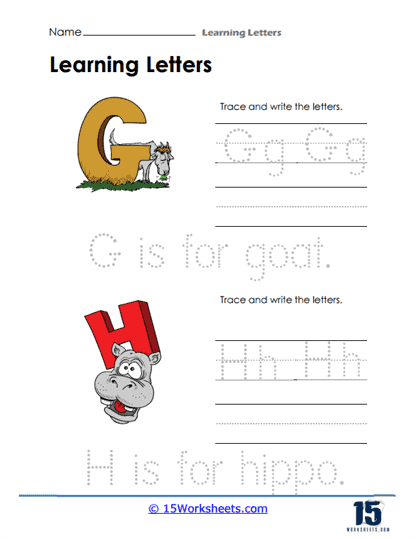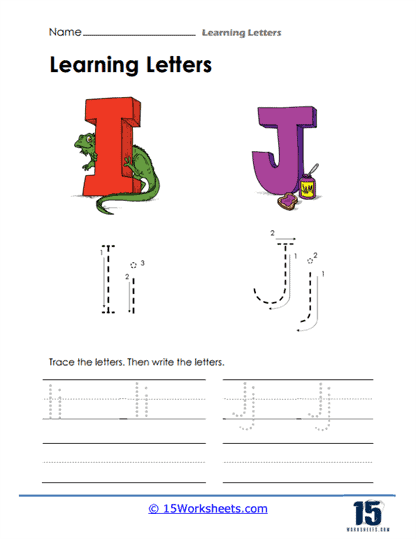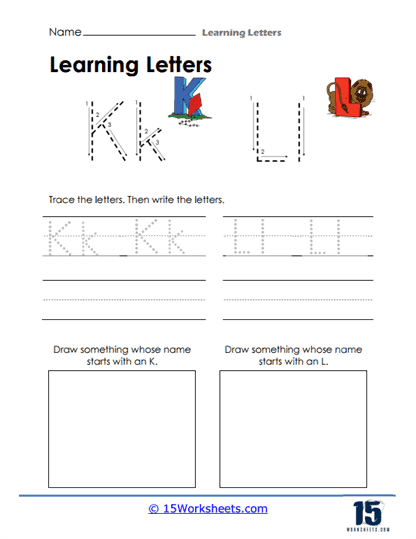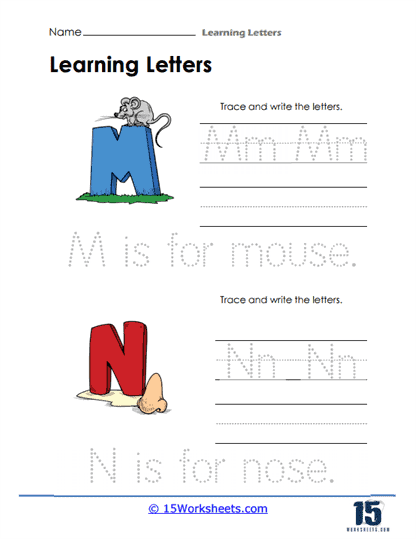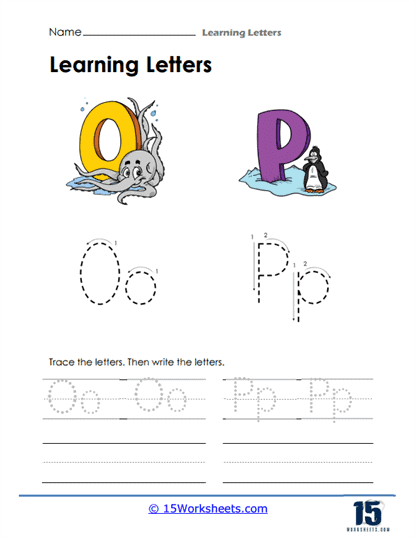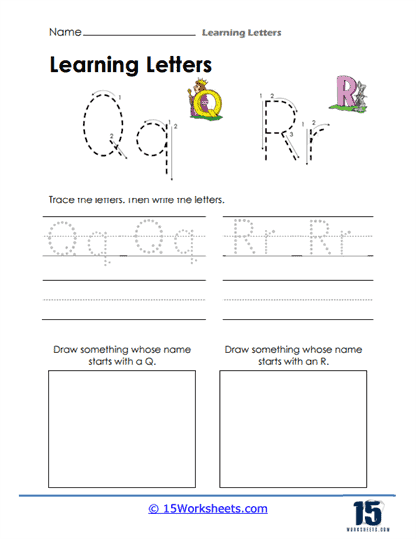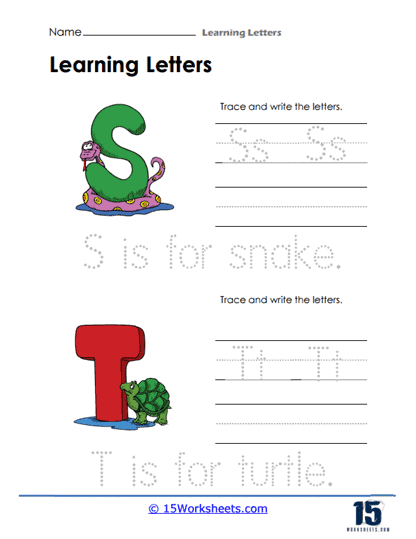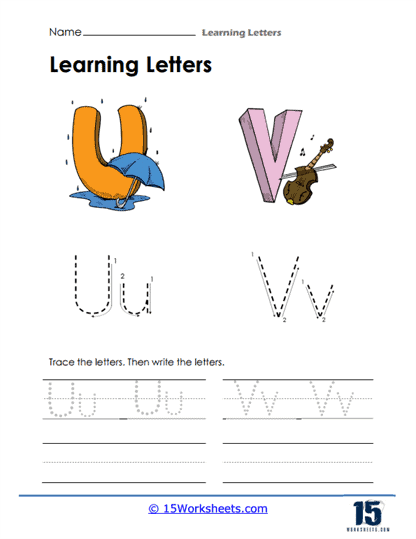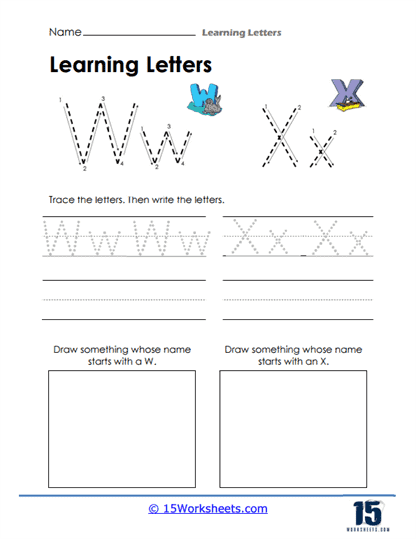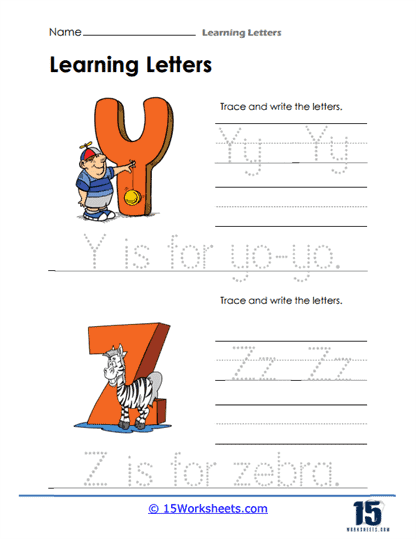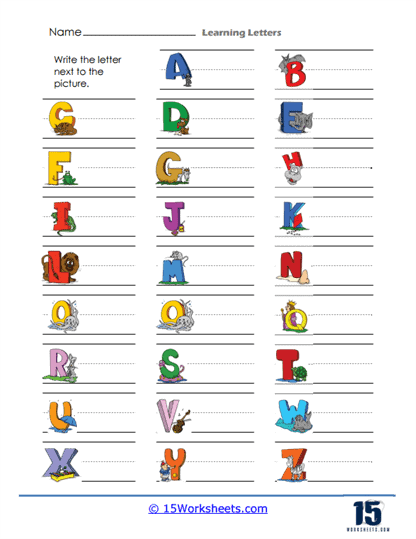Learning Letters Worksheets
About These 15 Worksheets
The goal of these worksheets is to help young children learn and practice letter recognition, letter formation, and basic phonics skills. They consist of printable pages with various activities and exercises focused on teaching children the alphabet.
The content of Learning Letters worksheets may vary, but they often include the following elements:
Letter Recognition and Formation
Worksheets introduce individual letters of the alphabet, both uppercase and lowercase, and help children identify and differentiate between them. Children are guided on how to write letters correctly. Worksheets provide tracing activities where kids can practice writing letters within dotted lines.
Phonics and Vocabulary
You will also find phonics exercises to help children associate letters with their corresponding sounds. This involves matching letter-sound pairs, identifying beginning or ending sounds, or forming simple words. Some worksheets incorporate vocabulary development by associating words with the letter being taught. For example, a worksheet for the letter “B” may include pictures of objects starting with the letter “B” like ball, bat, or banana.
Fine Motor Skills Development
These activities require children to use their fine motor skills, such as coloring, drawing, cutting, or pasting. These activities help develop hand-eye coordination and strengthen finger muscles. These types of worksheets typically provide multiple opportunities for children to practice each letter or concept. Repetition is essential for reinforcement and helps solidify letter recognition and formation skills.
How to Help Students Learn the Letters of the Alphabet
Here are some strategies and activities you can use to support students in their letter learning journey:
Letter Recognition Games – Incorporate interactive games and activities that focus on letter recognition. For example, you can create a letter scavenger hunt where students search for objects in the classroom or their environment that start with a specific letter.
Alphabet Songs and Rhymes – Singing alphabet songs and reciting alphabet rhymes can be a fun and memorable way for students to learn the sequence and names of the letters. Use catchy tunes and encourage students to sing along.
Letter Manipulatives – Provide students with hands-on materials like magnetic letters, foam letters, or letter tiles. Students can manipulate these objects to form words, sort letters, or match uppercase and lowercase pairs. Give students opportunities to practice letter formation by tracing letters on worksheets or using sand, finger paint, or interactive writing tools. Encourage correct pencil grip and letter formation techniques. Engage students in letter-themed crafts and activities. For instance, they can create collages using cut-out letters from magazines or form letters using playdough. These activities reinforce letter recognition and fine motor skills.
Alphabet Books and Flashcards – Read alphabet books that highlight each letter and its corresponding words. Use alphabet flashcards to practice letter identification and association with objects or images. Incorporate multisensory strategies to engage different learning modalities. For example, students can use their bodies to form letters, trace letters on textured surfaces, or create letters using sensory materials like sand or rice.
Play – Utilize educational apps, interactive websites, or digital learning tools that provide letter-focused activities and games. These resources can make letter learning more interactive and engaging for students. Incorporate letter learning into imaginative play activities. Set up a pretend post office where students sort and deliver mail with letters, or create a letter-themed grocery store where students match letter cards to corresponding items.

